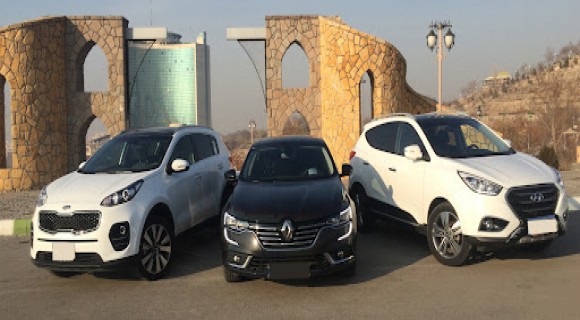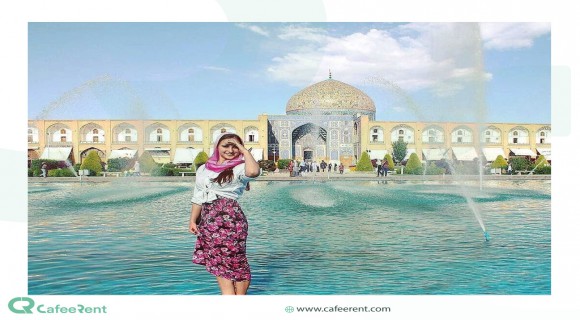When is the best time to visit Iran?

Travelers and visitors frequently refer to Iran as a four-season destination.
In Iran, cities might have entirely different climates than those found elsewhere in the nation.
At the same time, you may go skiing at the Dizin ski resort.
A few hours later, you can go on a walk in the sweltering Mesr desert or sip tea on the Caspian coast while it's pouring rain.
Having said that, if you're asking when is the best time to visit Iran, we must state that while you can visit the stunning cities of Iran at any time of year, going to some of them during particular times of the month makes for an experience you won't soon forget.
In this post, we'll discuss the best times to visit Iran and its various cities across the country's four distinct seasons.
So come along.
Are you trying to decide when to go to Iran?
You must first provide me with some details regarding your preferences and priorities before I can respond. Because, to be completely honest, it depends entirely on what you want.
whether you enjoy cold, hot, sunny, or cloudy weather. Or, the places you plan to visit are crucial to your response to this question.
You can have it all in Iran, I can assure you, even if you're looking for a truly thrilling vacation that includes building a snowman one day and relaxing on the beach the next while enjoying the sun and a gentle breeze.
Because of this, I can assure you that Iran will surprise you in any season if you are not picky about the cities you visit.
Anyhow, we'll discover more about Iran's peak tourist seasons.
But do not be fooled by it.
Even if you were unable to travel during the busiest period, you still have a chance to have an amazing trip to Iran.
Here are the details. YOU decide when is the ideal moment for you to visit this remarkable nation. Yay!
Are there four seasons in a year or four in a day?
Iran's Best Time to Visit
You must have looked up Iran on a map to be aware of its size.
It also benefits greatly from having four distinct seasons throughout the year in most of the country for the same reason.
But the ability to experience at least two seasons—winter and spring—in a single day—is what truly astounds visitors.
Imagine that you go skiing in Tehran's Design Ski Resort in the morning.
Then you fly to the Qeshm shore, which is 1,300 kilometers away. Laying down, you take pleasure in the sun's comforting warmth. What a TIME!

Or imagine yourself perspiring in the summertime in the humid jungles of Qleh Rudkhan, in the north.
After that, you fly to Tabriz. 500 kilometers to the west, visit the magnificent Kandovan settlement.
And there is no humidity and the weather is very cool. Not bad, huh?
Low Season: Late November through Early March
November is a terrific month if you enjoy seeing the colors dance in the natural world.
Every leaf changes to yellow, orange, and red. You'll be impressed by the beautiful nature.
You should keep in mind that during this time the days are considerably shorter than they are in the summer.
Around 5 PM, it also becomes dark. When making your itinerary, take this information into account. Iran's Dizin Ski Resort.
Most of Iran is extremely cold during this time of year.
Additionally, some areas of the country, such as the west and northwest, have heavy snowfall.
Tehran, the country's capital, has snow as well.
Cities in the north and center, like Tehran, Isfahan, Yazd, and Shiraz, are not as chilly as those in the west.
Rainfall is however likely.
You can take use of the various ski resorts during these months, including Design and Tochal in Tehran, Kuhrang in Isfahan, and many others.
The big but is right here.
However, the southern regions! After experiencing the frigid temperatures of the capital, you might not believe the springtime weather in the southern regions like Kish Island, Qeshm Island, Hormuz Island, Bandar-e Abbas, Chabahr, and Bushehr. as if winter didn't exist at all.
Benefits of Off-Season

Iran: Yalda Night
As you can see, it all depends on what you are searching for, despite the common misconception that you should visit any nation during the busiest travel period.
Additionally, there are fewer tourists and cheaper accommodation and ticket fees during the low season.
Some folks even prefer it this way.
Another good incentive to travel to Iran in the off-season is if you enjoy participating in Iranian traditions.
Family and friends get together on a December night (December 21st this year), which is the last day of fall in Iran.
Yalda Night, the shortest night of the year, is observed (Shab-e Yalda).
There are many enjoyable things Iranians do that are ingrained in their culture.
The temperature warms up as February disappears and March takes its place.
You can observe that there are more tourists passing by every day. However, do not be fooled by the sun's pleasant daytime illumination.
You can start to become cold when the sun sets and need to put on clothing.
High Season: Late March until the end of June
Due to the fantastic weather, many people think that this time of year is the greatest time to visit Iran.
By the middle of March, spring is evident everywhere you turn. The humans are also undergoing a renewal, so it is not just the earth.
Since everyone is getting ready for Nowruz, the Persian new year. Iran's Best Time to Visit
If you enjoy being busy! In Iran, this is the busiest season of the year.
especially with the upcoming Chahar Shanbe Soori. Iranians typically rejoice on the final Tuesday of the year.
Then, they jump over the fires they start.
They perform fireworks and enjoy festive fare.
It's the greatest time to visit Iran over the New Year if you want to experience the festive atmosphere.
Many people plan to travel and visit their families throughout the 13-day Nowruz festivities.
The price of accommodation and tickets has increased as a result.
And you must make reservations much earlier.
Therefore, if you dislike crowds, you should wait until the conclusion of Nowruz when domestic travel drops off.
By the end of March, the southern regions are getting hotter and hotter every day, which discourages tourists from going there.
You can ask for your preferred Iran hotels if you plan on visiting there.
July through August's end: The Sun is Brighter
In the majority of Iran, the pleasant, cool weather has passed, and day and night, air conditioners are used.
However, there are a lot of domestic passengers in the country's western, northwestern, and northern regions at this time.
In any case, summers means numerous school holidays.
The cost of hotels decreases during this season, with the exception of the places stated above.
Early November to September: High Season is once more here.
The weather often improves starting in September and lasts through mid-November.
Nearly in late September, domestic travel begins. However, as they return to school and college, there will be less people everywhere.
Therefore, that is another ideal time to visit Iran. The days getting shorter is the difference.

Iran travel on religious holidays
While Ramadan
Ramadan travel to Iran
Iran is an Islamic nation, hence many people observe Ramadan fasts every year in accordance with the Islamic calendar.
The lunar calendar used in Islam. In a solar calendar, Ramadan advances a few days every year.
For instance, Ramadan began on April 14th in the year 2021. It will start on April 2nd of next year.
Muslims fast from a little after morning to dark. Even if you are not fasting, it is forbidden to eat, drink, or smoke in public during Ramadan.
The majority of cafes and restaurants are therefore closed until dusk.
However, some eateries are permitted to offer food for visitors and other reasons during the day. They are scarce.
The good news is that Ramadan in Iran might be quite different from other countries.
You can try the entire ritual for one day while staying with some Iranian friends who fast if you so choose.
They awaken a few hours before dawn and start making breakfast.
Before the beginning of Azan, they eat and drink. After Azan, prayers are said. Some then fall asleep once again.
After that, they go about their daily business, with the exception of eating and drinking.
After dusk is when the tasty part begins (Eftari). Ramadan is when some dishes are most popular.
You will adore them, I bet. The cities are quieter this month. Additionally, non-business travel is uncommon.
People leave their homes after Eftari, though. In the evening, there are a lot of people in the malls, eateries, and cafés.

We will be happy to answer any queries you may have about Iran buses, Iran flights, or Iran car rental services.
When Muharram
going to Iran As of Muharram One of the most significant religious months in Iran is Muharram.
And according to the Islamic calendar, it is also the first month. People lament the death of Imam Hussain, the grandson of Muhammad, on Ashura, the tenth day of Muharram.
Government offices, schools, universities, malls, historical sites, and all other establishments are closed on the Day of Ashura.
To commemorate that day and to uphold their religious principles in defense of social justice, people perform religious rites in the street.
These customs are followed from the first days of Muharram till the tenth day.
The 40th day following Ashura is known as "Arbaeen," and it is also a recognized holiday.
These days, people express their sorrow and grief by dressing in black. Additionally, during this month, black flags may be flying everywhere in the city, especially in places of worship like Mashhad, Qom, Esfahan, and Yazd.
Participating in such rites is incredibly thrilling for many tourists.
Some of these in particular can seem really strange to you. The very unique rites of Khomeini Shahr are so well-known because they could be a little frightening. In Imam Hussain's anguish, blood is shed.
conclusion
Finally, you need a vehicle to get around Iran. You can rent the vehicle you need by visiting the https://cafeerent.com/tourism website.







Add Comment